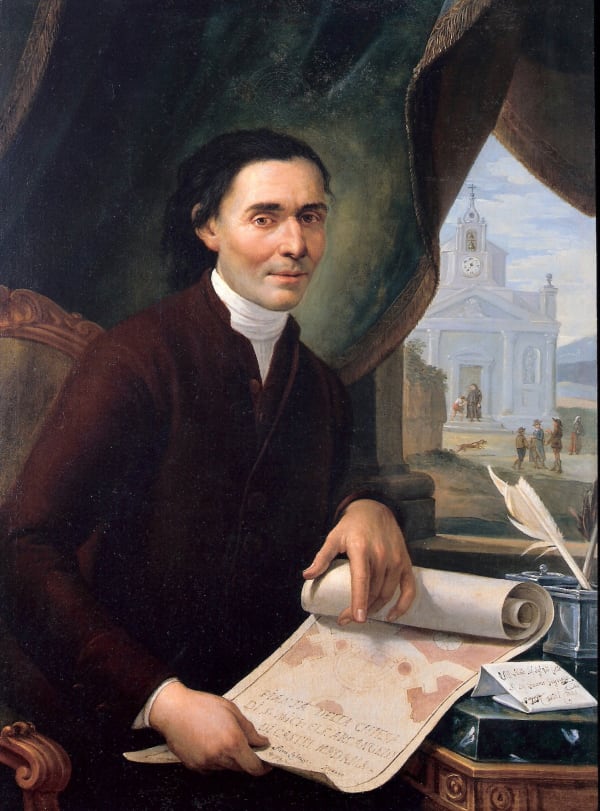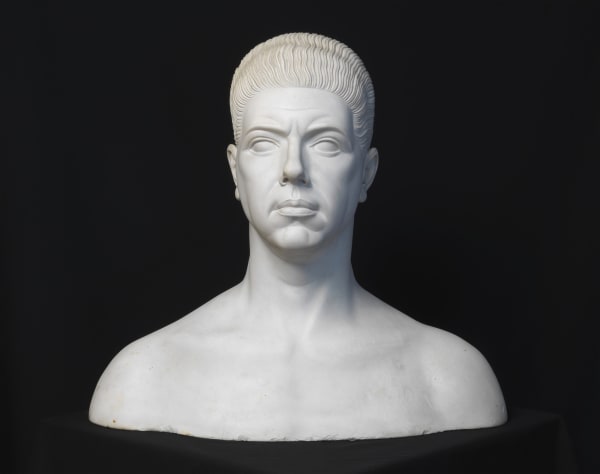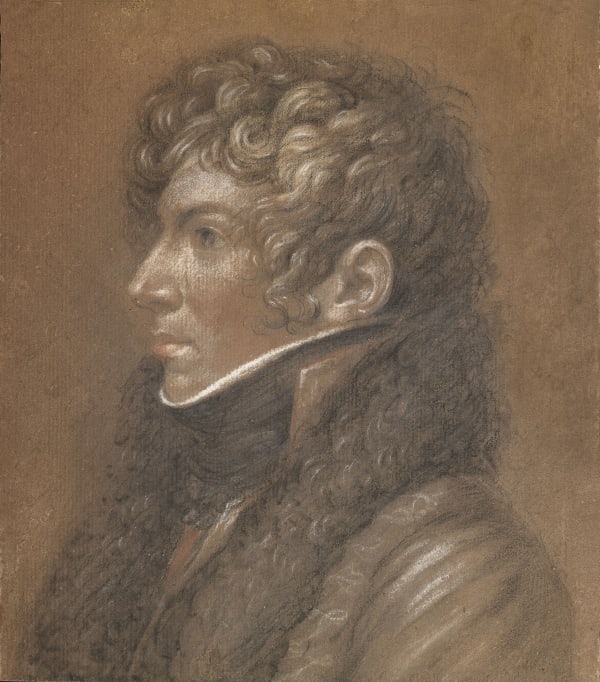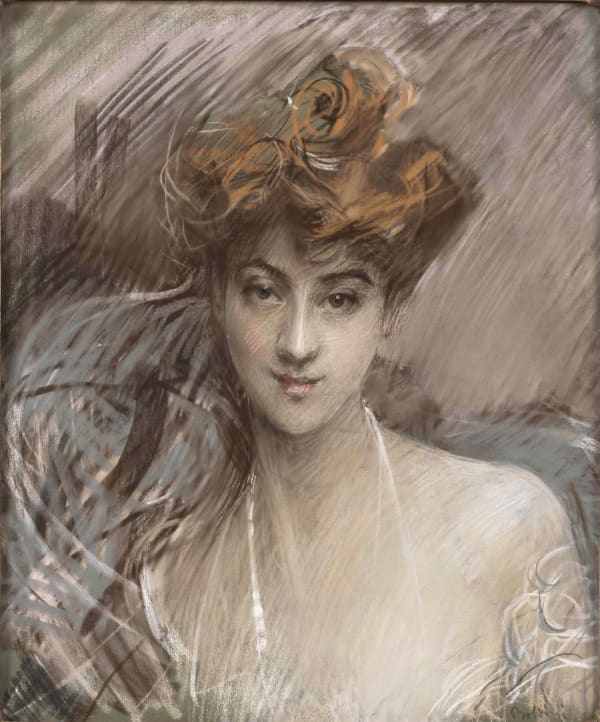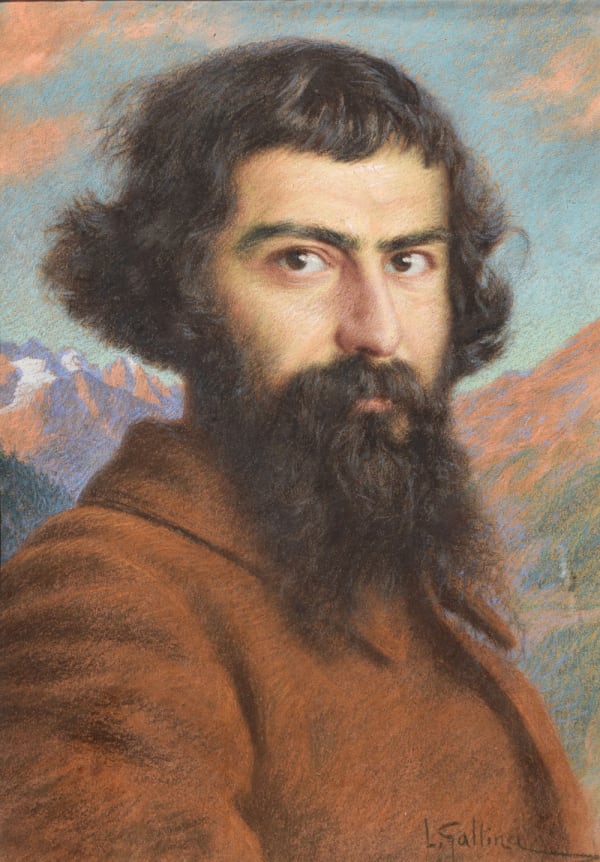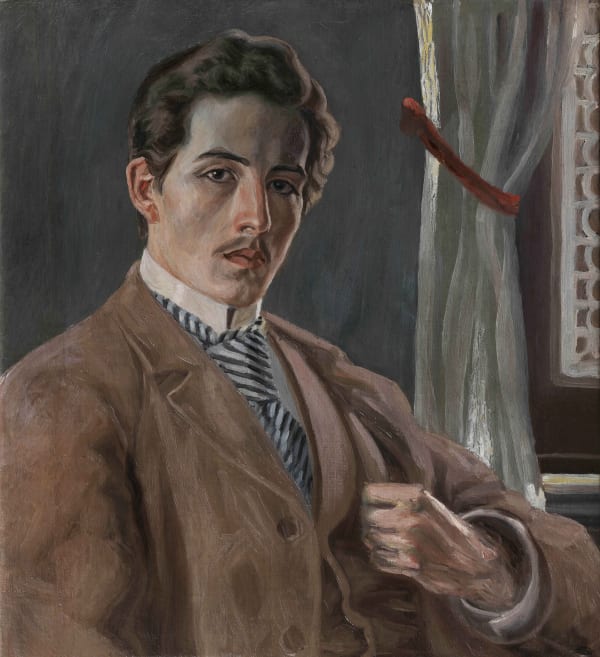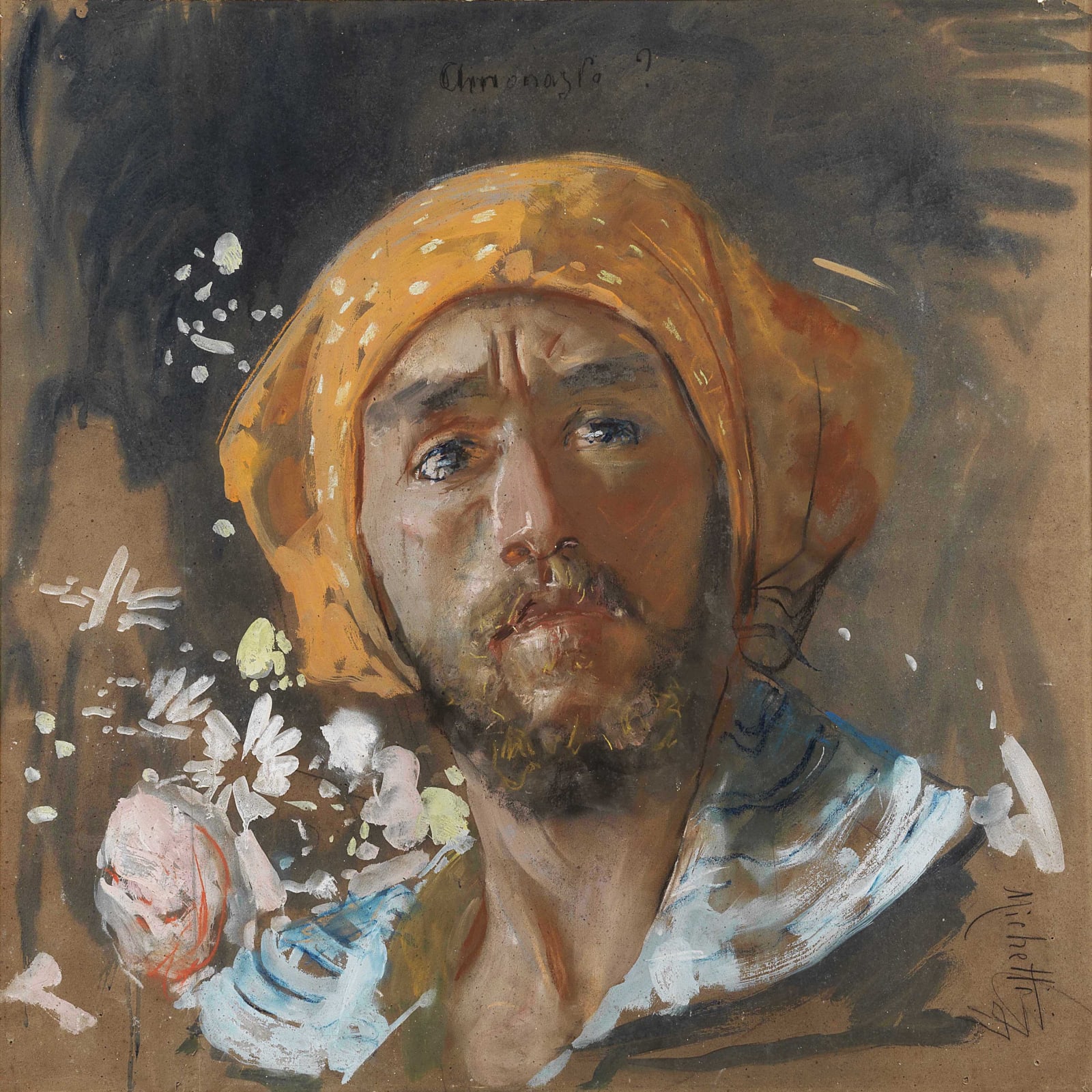
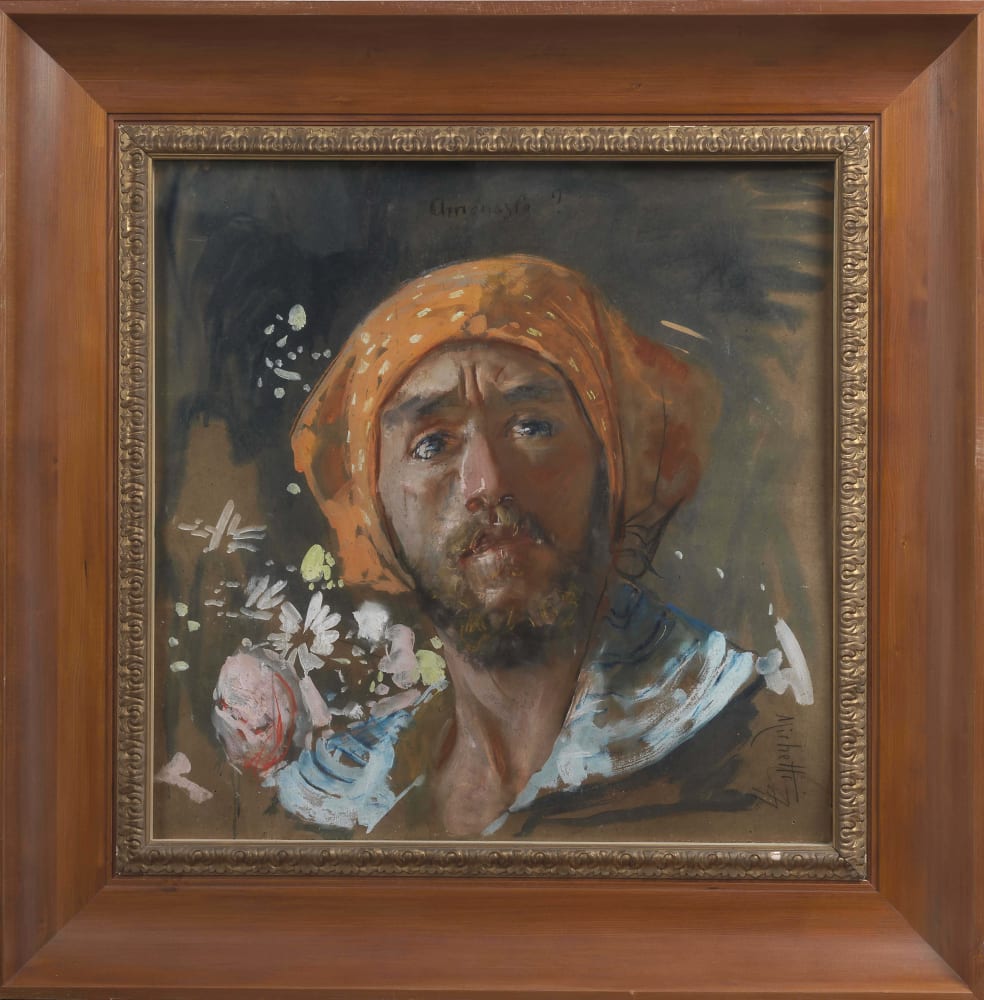

FRANCESCO PAOLO MICHETTI Tocco da Casauria, 1851-Francavilla al Mare, 1929
SOLD
Provenance
Aldo and Amelia Ambron collection
Self-portraiture was a genre that Michetti pursued with assiduity and determination in the 1870s and '80s, producing a number of true masterpieces which perfectly capture the strong, magnetic and introspective bond that he nurtured with reality.
The hitherto unpublished Self-portrait of Francesco Paolo Michetti presented here, from the private collection of Amalia and Aldo Ambron, is a work on paper displaying dazzling draughtsmanship with forms sculpted by the light and embellished with bright, vibrant colour contrasts. Its superb quality places it squarely in the celebrated series of Self-portraits which the artist produced in and around 1877. We might point, for instance, to the type represented by the Self-portrait in pastel and tempera on paper, c. 1877, now in the Intesa San Paolo Collection[i] [fig. 1] or the Self-portait in pastel on paper, c. 1877, now in the Museo Nazionale di San Martino in Naples[ii] [fig. 2], both of which bear a remarkable resemblance to the features of the artist as seen in a photograph portraying him with the German dealer Reitlinger[iii] [fig. 3].
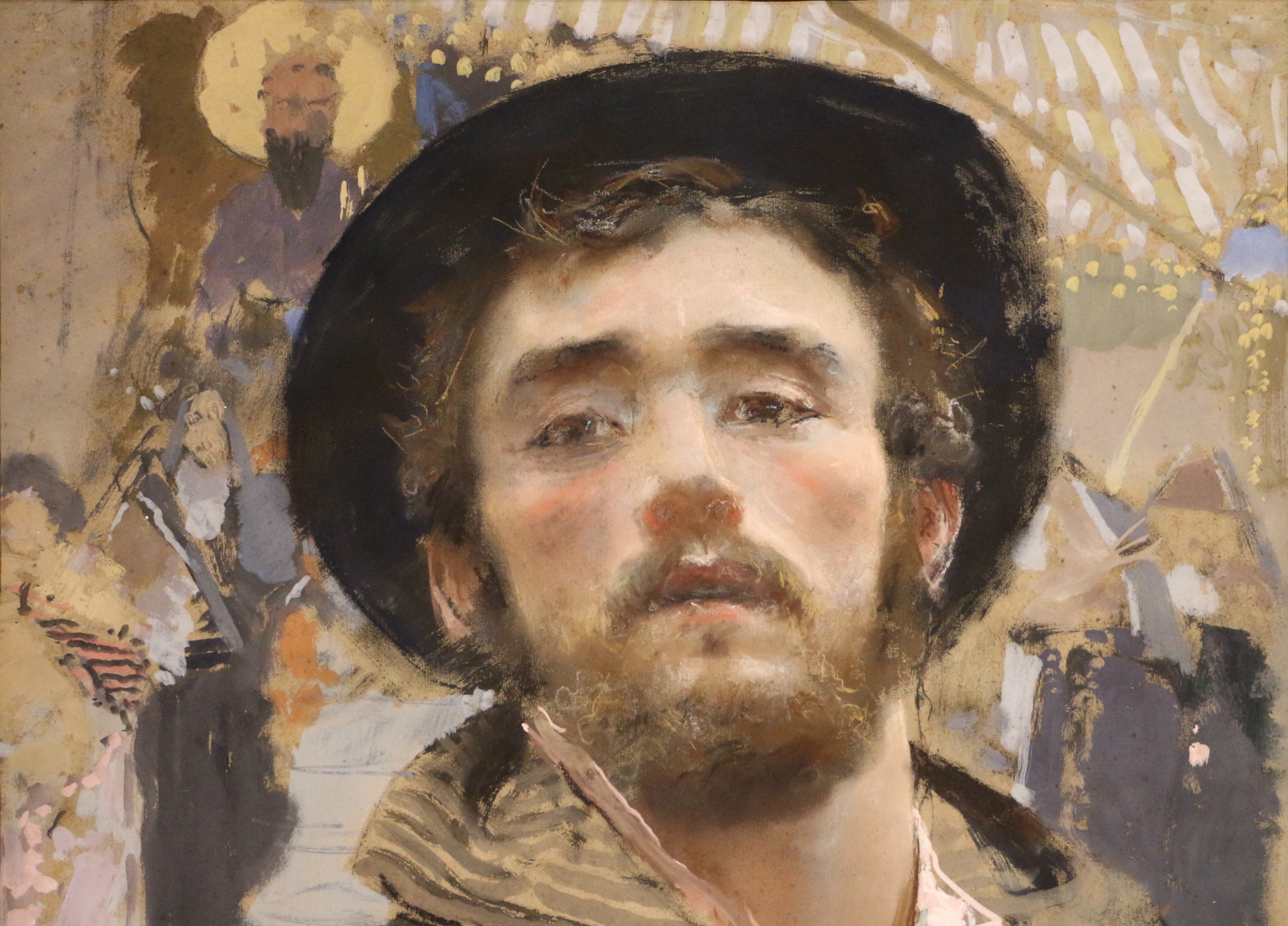 fig. 1
fig. 1 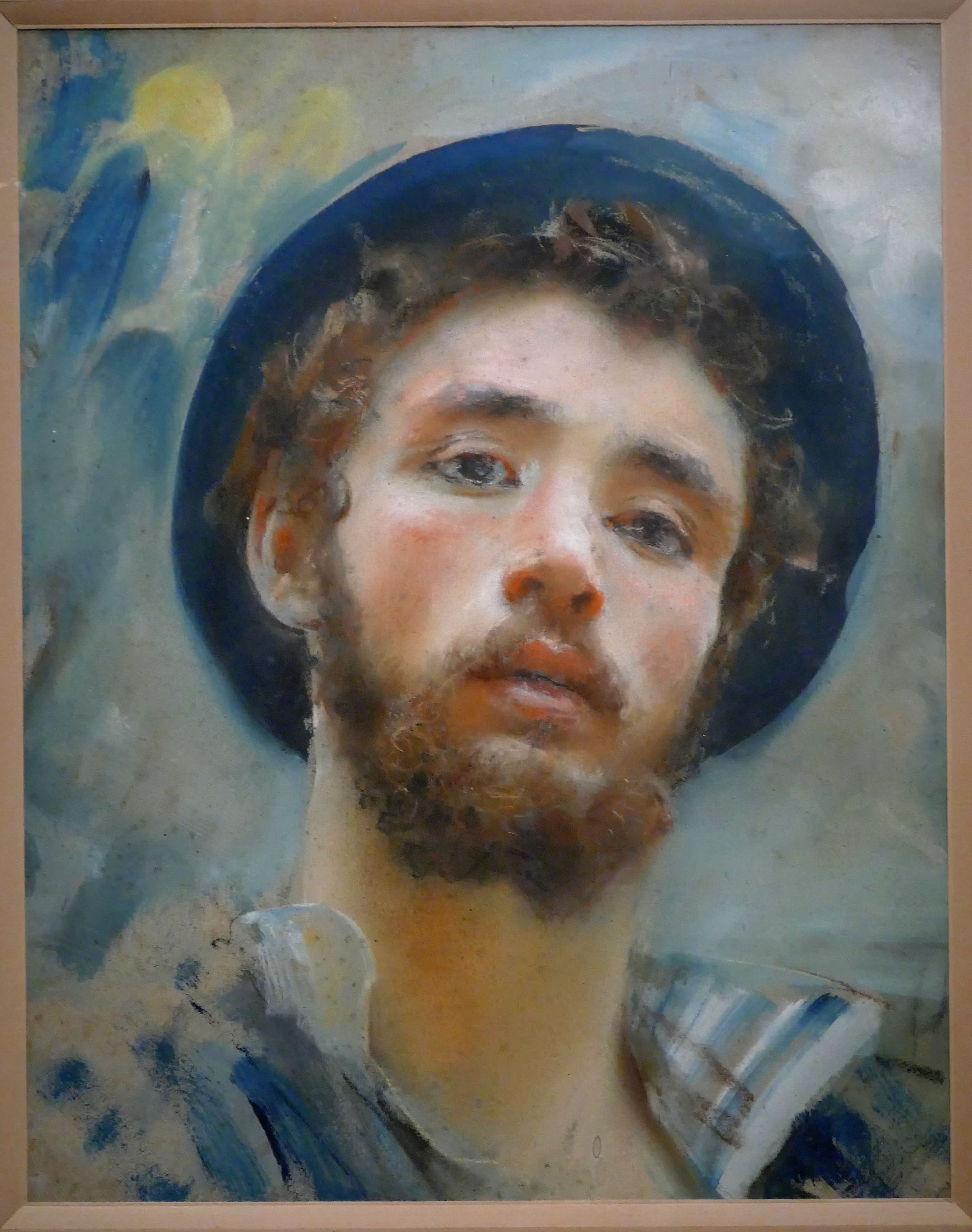 fig. 2
fig. 2 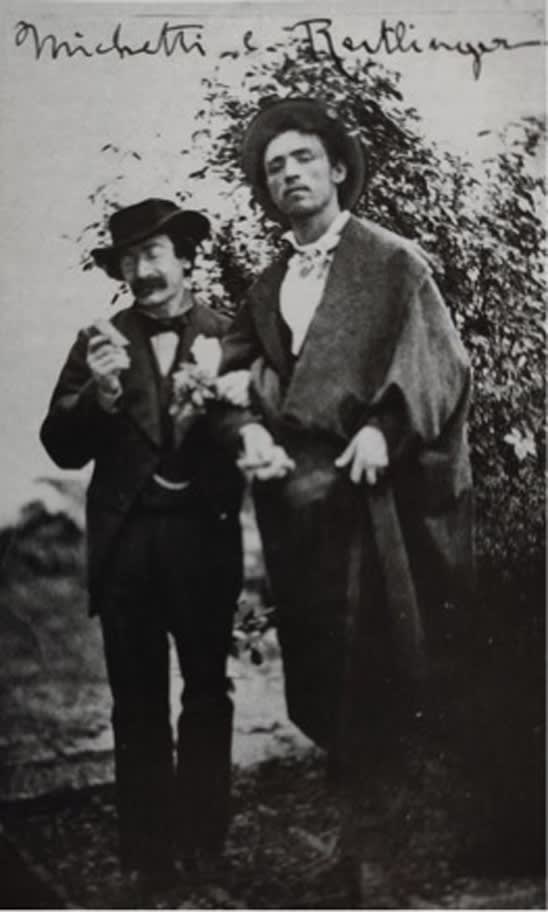 fig. 3
fig. 3
But the stern and serious look on the face of the artist who produced this Self-portrait seems to be closer in type to the Self-portrait in pastel on paper dated 1877 now in the Museo Nazionale di San Martino in Naples[iv] [fig. 4], it too displaying rapidly sketched flowers by the head, bottom left; this is in fact the type also documented by the Self-portrait (Jest) in pastel on paper dated 1877, now in the collections of the J. Paul Getty Museum in Los Angeles[v] [fig. 5]. And we can also detect a remarkable similarity between the latter two Self-portraits and a photographic portrait of the painter taken at F. Lammara's studio in Naples in 1876 [vi] [fig. 6].
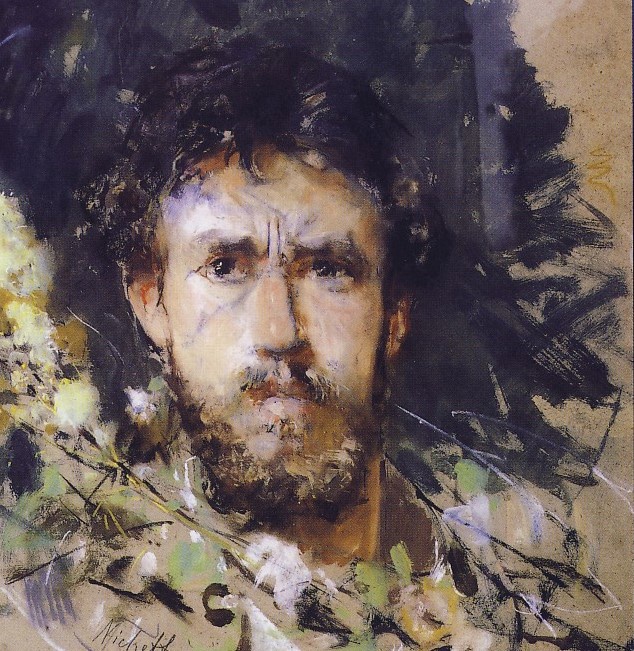 fig. 4
fig. 4 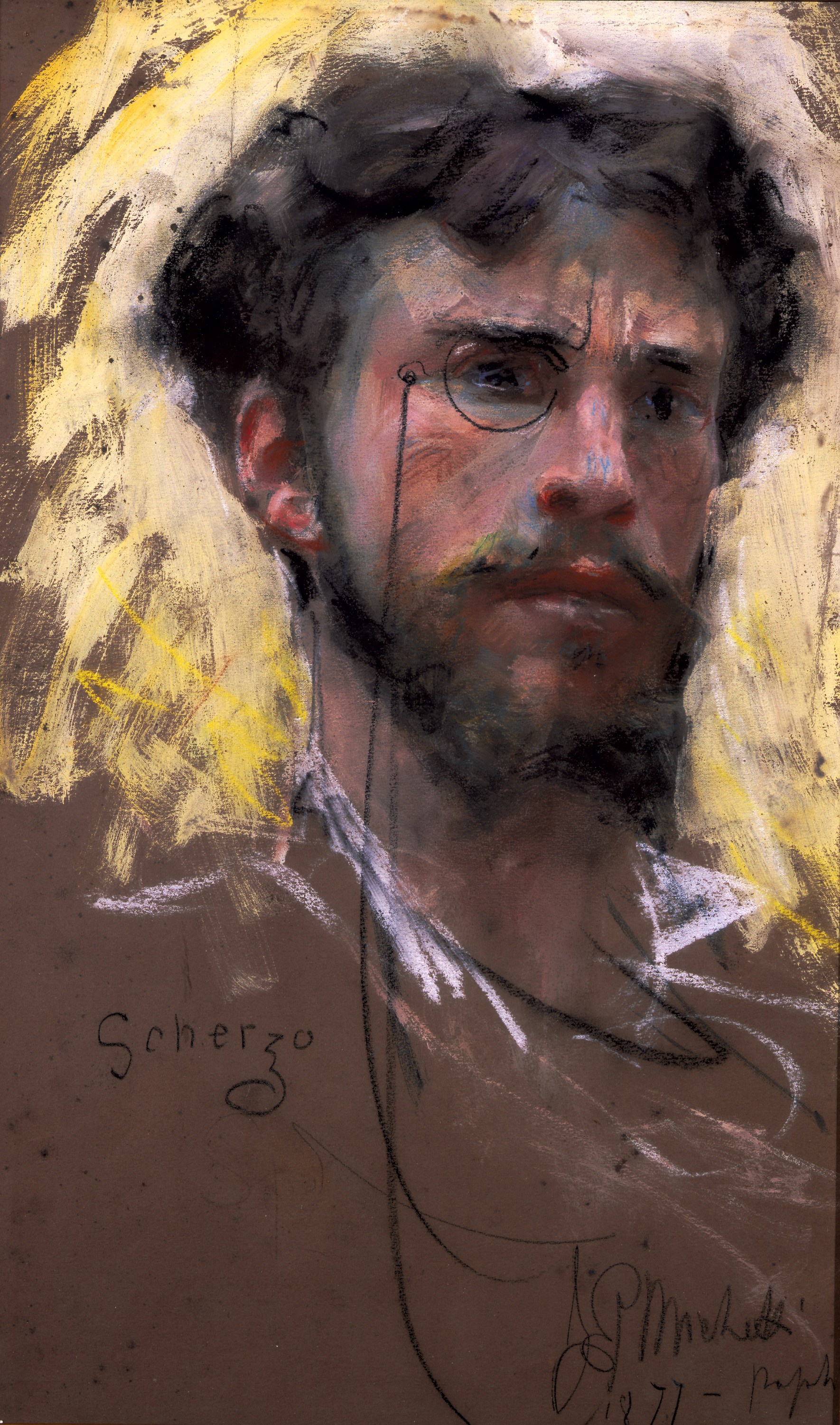 fig. 5.
fig. 5. 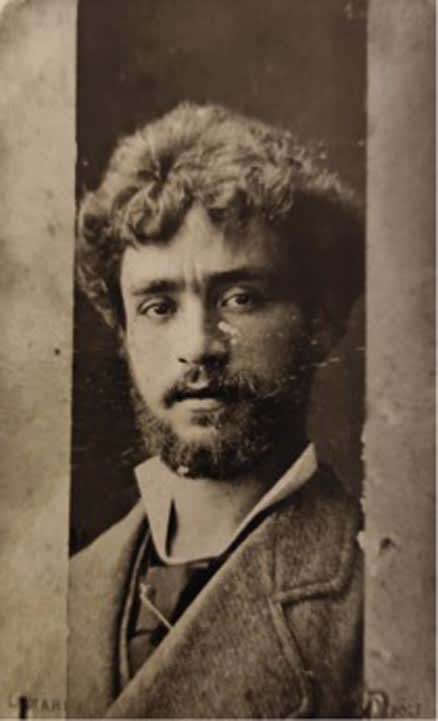 fig. 6
fig. 6
It is common knowledge that the practice of studying forms of reality through photography was a constant throughout Michetti's career, producing results of astonishing modernity that herald the combination of stimuli and evocation in the transition from Realism to Symbolism at the turn of the 19th century[vii].
His growth as a painter was fuelled by a skilled and eclectic inclination whose goal was the mutual enhancement of light and colour in a new scale of values on the painted surface appearing to fly in the face of the accepted method for constructing perspective. Drawn by the innovations of international naturalism, by an impressionist manner influenced as much by the nervous yet elegant draughtsmanship of Fortuny as by the flat and glossy palette of the Japanese print, Michetti perfected the pastel technique that he had learnt from Edoardo Dalbono, combining it with tempera. He was fond of tempera and pastel for the luminosity that the medium permits if applied with rapid, nervous brush strokes made of streaks, touches and dabs of paint.
For Michetti, the years between 1871 and 1877 coincided with a period of rapid success on the international scene in London and Paris and with an early appearance on the collector's market in America. These achievements were followed by success in Italy, with several dates marking the peak of his popularity: 1877, the year of the National exhibition in Naples; 1880, that of the National Exhibition in Turin; and 1881, that of the National Exhibition in Milan.
The many works he showed in Milan included an oil painting entitled Aida dedicated to the opera singer Giuseppina De Giuli-Borsi, the lead soprano in an acclaimed performance of Verdi's opera set in ancient Egypt at the Teatro Marruccino in Chieti in April 1877. The painting appeared on the antique market in 2001 (Aida, oil on canvas, 48 x 34 cm) with an autograph dedication: “Alla De Giuli/ Michetti” [viii]. The Self-portrait under discussion here, which the autograph inscription above the head likens to the figure of Amonasro – a character in Verdi's Aida – shows the painter with his head swathed in a gaudy orange ochre kerchief dotted with lighter and more luminous touches and framed in a broad collar of striped white and sky blue fabric with a pale blue silhouette, in an attempt at disguise not uncommon for this artist. The question mark that Michetti adds after the name of the character whose appearance he is assuming, Amonasro?, reveals the playful side of the painter who, after gathering his thick, curly hair in a brightly coloured piece of cloth, looks at himself in surprise to discover that he resembles an exotic king of the ancient world: the Ethiopian king, Aida's father, who travels to Egypt where his daughter is held as a slave in order to urge her to seek vengeance; a king in disguise; a warrior whom fate has decreed should survive capture by the Egyptian army.
The character's intense and proud expression, in any event, sits perfectly with the royal dignity of Amonasro who, in inciting Aida to rebel against the Egyptians and forcing her to garner information on enemy troop movements from her beloved Radamès, conjures up in his aria the lost beauty of the "perfumed forests" and "cool valleys" of their native Ethiopia.
- Monica Vinardi
[i] cfr. F. Benzi, G. Berardi, T. Sacchi Lodispoto, S. Spinazzè, Francesco Paolo Michetti. Catalogo generale, Cinisello Balsamo, Silvana Editoriale, 2018, n. 145, p. 164.
[ii] Ivi, n. 144, p. 164.
[iii] Ivi, ill. 2, p. 355.
[iv] Ivi, n. 143, p. 163
[v] Ivi, n. 142, p. 163.
[vi] Ivi, ill. 6, p. 356.
[vii] cfr. M. Miraglia, Francesco Paolo Michetti fotografo, Turin 1975.
[viii] Arte moderna e Contemporanea, Finarte – Semenzato Case d’Aste, catalogo vendita 16/12/2001, lotto n. 105, p. 105.
-
 PIETRO LABRUZZIPortrait of Giacomo Giustini Holding a Plan of the Church of San Michele Arcangelo in Castel Madama
PIETRO LABRUZZIPortrait of Giacomo Giustini Holding a Plan of the Church of San Michele Arcangelo in Castel Madama -
 AMLETO CATALDIPortrait of a Young Man, 1920 c.
AMLETO CATALDIPortrait of a Young Man, 1920 c. -
 ANDREA APPIANIPortrait of a Young Hussar with Napoleon's Army (possibly a Portrait of Auguste-Louis Petiet), c.1800–1801
ANDREA APPIANIPortrait of a Young Hussar with Napoleon's Army (possibly a Portrait of Auguste-Louis Petiet), c.1800–1801 -
 CARL FRIEDRICH HEINRICH WERNERCarnival in Rome
CARL FRIEDRICH HEINRICH WERNERCarnival in Rome -
 GIOVANNI BOLDINIPortrait of Mme. Lucie Gérard, c. 1890
GIOVANNI BOLDINIPortrait of Mme. Lucie Gérard, c. 1890 -
 LUIGI GALLINAPortrait of Giovanni Segantini, ca. 1895
LUIGI GALLINAPortrait of Giovanni Segantini, ca. 1895 -
 HILDING WERNERPortrait of Harry Werner, 1899
HILDING WERNERPortrait of Harry Werner, 1899
Join the mailing list
Subscribe to our newsletter to receive all the news about exhibitions, fairs and new acquisitions!


